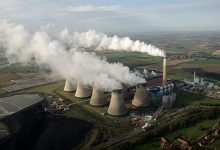Australia’s greenhouse gas emissions have seen a temporary drop in the second quarter of 2020, as the impacts of the Covid-19 pandemic flowed through into global energy markets and travel restrictions triggered a dramatic fall in fuel use.
The latest greenhouse gas emissions update, which covers emissions up until the end of June, sheds light on how the Covid-19 pandemic impacted Australia’s emissions as lockdowns and travel restrictions were introduced throughout the period.
In the year to June 2020, Australia’s emissions had dropped 3 per cent from the year prior, representing a 16.1 million tonne fall in carbon dioxide equivalent emissions.
But the gains are expected to be only temporary, as almost all of the falls in greenhouse gas emissions related to the comparatively short-term impacts of the Covid-19 pandemic, and may not reflect any systemic reductions in the emissions intensity of the Australian economy.
In the second quarter of 2020, covering the months of April, May and June, emissions from the transport sector fell a massive 22.5 per cent, as travel restrictions and working-from-home arrangements slashed fuel use.
Fugitive emissions, caused by the extraction and transport of coal and gas, also reduced by 8.8 per cent over the quarter, as gas production fell following a collapse in gas prices and a fall in global energy consumption.
On an annual basis, Australia’s emissions fell by 3 per cent in the year to June 2020, with electricity emissions falling by 4.3 per cent as the market share of wind and solar continues to grow. Agricultural emissions fell by 3.7 per cent, caused primarily by reduced cattle numbers due to drought.
The Covid-19 pandemic has allowed the Morrison government to achieve its largest annual reduction in Australia’s greenhouse gas emissions since taking power in 2013 but is still smaller than the annual reductions achieved by the previous Labor government, each year between 2010 and 2012.
Industrial energy use, excluding electricity but including the use of coal and gas for thermal heat, saw emissions rise in the last year, increasing 3.1 per cent, temporarily overtaking transport emissions as the second-largest sector in terms of Australian greenhouse gas emissions.
The transport sector saw the most dramatic impacts due to Covid-19. Throughout Q2 2020, the Department of Industry, Science, Energy and Resources estimated that emissions from petrol fuels fell by 25.6 per cent, compared to the same period a year earlier. Diesel emissions also fell by an estimated 5.2 per cent.
A fall in aviation emissions is understood to have been a major contributor to the fall in petrol fuel emissions, but separate figures have not been published by the department.
The impacts on Australia’s emissions are likely to prove only temporary, with transport emissions expected to recover once travel restrictions are able to be eased.
Emissions are also expected to recover across other sectors, with the Morrison government has pushed a ‘gas led recovery’ to the economic challenges, including by providing additional funding to the gas industry to support its ongoing expansion, which will likely see fugitive emissions from the sector continue to surge.
Good news from Minister Angus Taylor: Australia’s annual emissions fell by 16m tonnes in the 2020 financial year to the lowest level since 1998. Now we just have to repeat this trick every year for the next 30 years and net zero by 2050 is in sight.
— Tony Wood (@tony_r_wood) November 29, 2020
Federal energy and emissions reduction minister Angus Taylor used the updated greenhouse gas figures to again declare that Australia had reached its 2020 Kyoto emissions reduction target, and claiming that structural reductions were being achieved in both the electricity and agricultural sectors.
“The Quarterly Update confirms Australia has beaten its 2020 target (target period 2013-20) by 459 million tonnes, including overachievement from the previous period (2008-12). This is an increase on the previous estimate of 411 million tonnes published in December 2019,” Taylor said in a statement.
“Australia’s overachievement on its 2020 target is due in large part to significant structural declines in emissions from the electricity and agriculture sectors.” The over-achievement included the period where Australia was allowed, uniquely in the developed world, to significantly increase emissions in the first period of Kyoto.
The electricity sector is likely to be one of the only sectors achieving long-term structural reductions in emissions, with the exit of coal generators from the market, and their replacement by continued investment in wind and solar projects, seeing electricity emissions steadily decline.
However, information provided by the minister’s own department suggests that the reductions in agricultural emissions have largely been driven by drought. Farmers would likely be hoping that these impacts are only temporary, and may recover when a lifting of drought conditions allows farmers to run larger cattle numbers.
“The 3.7 per cent decline in emissions from the agriculture sector reflects the continuing effects of the recent drought which led to a decline in livestock populations and fertiliser use,” the department said in its quarterly update.
However, as global warming is likely to increase the frequency and severity of drought, it may indeed lead to a long-term decline in agricultural production, unless stronger action to prevent climate change is undertaken by governments.
Opposition energy and climate spokesperson, Mark Butler, said that most of Australia’s recent emissions reductions had been the result of the policies of the previous Labor government, adding that the Morrison government had yet to deliver a meaningful climate policy.
“After emissions were cut by 15 per cent under the last Labor government, they have flatlined under this Coalition Government,” Butler said. “After seven years, they still haven’t delivered a national climate change policy to modernise our economy and cut pollution.”
“Instead of real climate policy that will grow jobs, modernise industry and lead the recovery, Scott Morrison is counting on emissions reduction from the recession, the drought and Labor’s Renewable Energy Target to deliver pollution cuts.”










